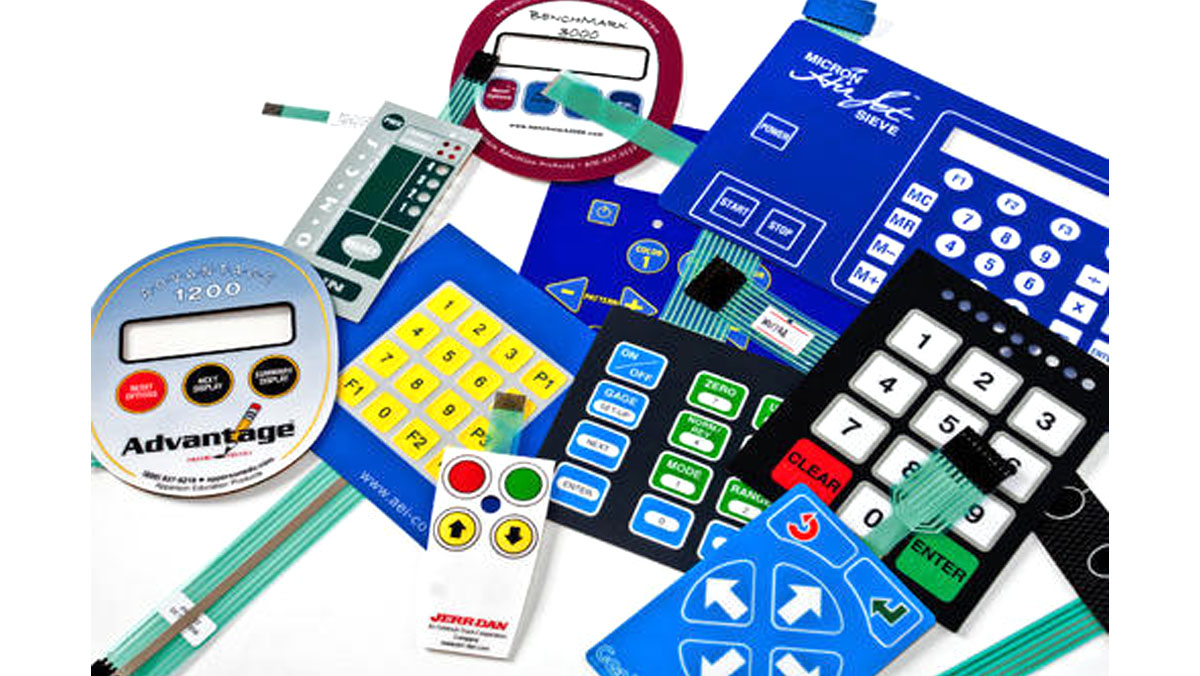Understanding Membrane Layer Switches: The Key to Resilient and Reliable Controls

What Are Membrane Switches?
Membrane switches are an advanced service in the world of customer interface modern technology, combining functionality and design perfectly. These tools offer as an interface in between individuals and digital systems, integrating a number of components into a small style. Normally created from adaptable, slim layers of products, membrane layer buttons are created to reply to touch, making it possible for customers to connect with equipment and digital gadgets efficiently.
The main aspects of a membrane switch consist of a published circuit layer, visuals overlay, and a spacer layer that stops unexpected activation. The graphic overlay can be customized to reflect brand name identification or individual preferences, improving aesthetics while ensuring use. Membrane layer buttons are typically utilized in numerous applications, consisting of medical devices, customer electronic devices, and industrial equipment, owing to their durability and resistance to ecological aspects such as wetness and dust.
Among the essential advantages of membrane layer switches is their ability to hold up against deterioration, making them optimal for high-traffic environments. In addition, they are light-weight and require marginal area, permitting cutting-edge designs in item development. Overall, membrane layer switches stand for a effective and practical option for modern digital interfaces, marrying technology with user-centric style concepts.
Exactly How Membrane Layer Switches Job
The operation of membrane layer switches over joints on an easy yet reliable device that translates individual input right into electronic signals. When an individual presses the switch, the leading layer flaws, allowing a conductive aspect in the circuit layer to make call with an equivalent conductive pad on the bottom of the graphic overlay.
The design of membrane layer buttons can vary, but they commonly include domes or responsive elements to provide comments to the customer, boosting the total experience - membrane switch. The products used in membrane switches, such as polyester or polycarbonate, add to their longevity and resistance to ecological factors, including moisture and dirt. The published circuits are usually encapsulated, which safeguards them from wear and tear over time.
Benefits of Membrane Switches

In addition, membrane buttons are recognized for their resilience. Built from robust materials, they are resistant to dust, moisture, and physical wear, which substantially expands their life-span contrasted to typical mechanical buttons. This durability makes them specifically ideal for high-traffic settings and applications calling for long life.
An additional substantial advantage is the ease of cleansing and upkeep. The smooth surface of membrane switches reduces dust buildup and is usually unsusceptible spills, making them ideal for setups that call for constant sanitization.
In addition, membrane layer switches provide a streamlined account, bring about a thinner style that can be integrated into numerous gadgets without including bulk. This attribute not just enhances the visual allure however also adds to an extra ergonomic product design.
Applications of Membrane Switches
Straightforward and flexible, membrane buttons discover applications across a large range of industries, consisting of medical tools, consumer electronics, and commercial equipment. In the clinical field, these buttons click this link are essential to tools such as diagnostic equipment, individual monitoring systems, and mixture pumps, where reliability and convenience of cleaning are essential. Their capability to withstand extreme environments and keep functionality makes them suitable for such applications.

In consumer electronic devices, membrane layer switches are utilized in items like microwaves, washing devices, and remotes - membrane switch. Their sleek style permits instinctive individual interfaces, boosting the overall individual experience while giving sturdiness and resistance to damage
Industrial equipment likewise profits from membrane layer buttons, particularly in control panels for machinery and automation systems. These switches use defense versus dust and moisture, making sure regular efficiency in tough environments. Additionally, their adjustable functions permit suppliers to customize them to specific operational needs, enhancing efficiency and functionality.
Selecting the Right Membrane Layer Change
When choosing a membrane switch, it is important to think about different factors that influence efficiency and viability for certain applications. The main considerations include ecological problems, tactile feedback, resilience, and design requirements.
First, analyze the operating setting; switches exposed to dampness, chemicals, or severe temperatures require details products to ensure long life and performance. Next, evaluate the demand for tactile feedback. Relying on individual interaction, some applications might benefit from a responsive action to confirm activation, while others might like a non-tactile design for visual reasons.
Durability is an additional vital factor; membrane layer switches must be developed to withstand regular use, effects, and abrasion. Ensure the picked switch can withstand the expected lifecycle, especially in high-usage scenarios.

Conclusion
In conclusion, membrane layer changes serve as essential components in the layout of More hints sturdy and reliable control systems across various markets. The adaptability of membrane changes allows for tailored options that fulfill specific operational requirements, strengthening their value in modern-day technology.
Membrane switches represent an important facet of modern-day user interface layout, mixing functionality with resilience in various applications.Membrane switches are a sophisticated service in the realm of individual interface innovation, integrating performance and style effortlessly. Normally created from versatile, slim layers of materials, membrane switches special info are designed to respond to touch, enabling users to interact with equipment and digital gadgets successfully.
The style of membrane switches can differ, yet they commonly integrate domes or tactile elements to provide responses to the customer, improving the general experience.In conclusion, membrane layer switches over serve as vital components in the layout of sturdy and trustworthy control systems across numerous markets.